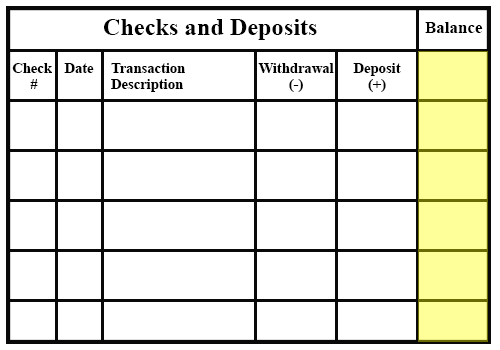Learn
Banking Documents
Deposit Slips
The first thing that you will need to do when opening a checking account is to deposit money into it. You will continue to do this in the future either by direct deposit from your employer or with the use of a deposit slip. It is important to use a deposit slip specific to your account so that the money goes into the correct account.
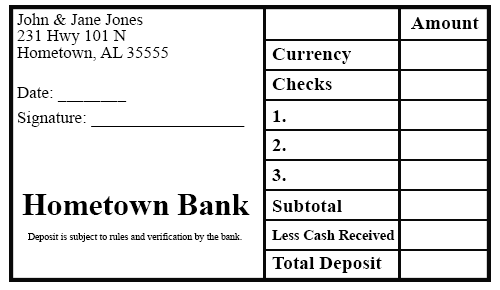
See a larger version of the deposit slip here.
Follow the steps below to complete a deposit slip.
- Enter the date of the deposit.
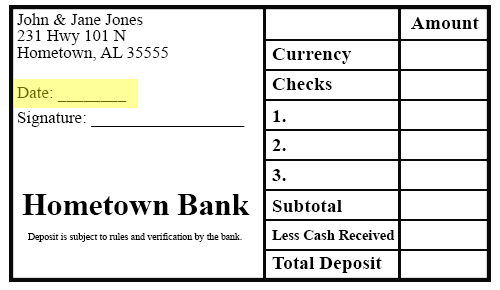
- If you are depositing cash, the amount goes in the Currency row.
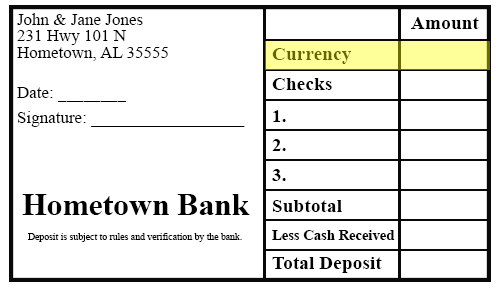
- Each check amount must be entered separately in the spaces provided.
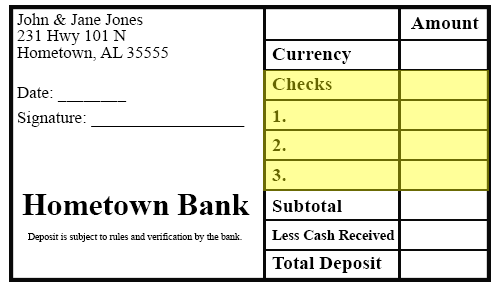
- Be sure to include the number of the checks you are depositing.
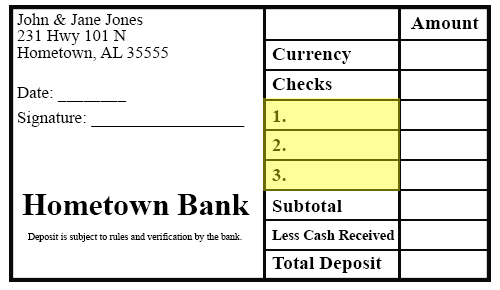
- Once you entered all of your checks and currency, be sure to get a subtotal. List the amount of money you would like back (less cash received) and fill in the amount of the total deposit.
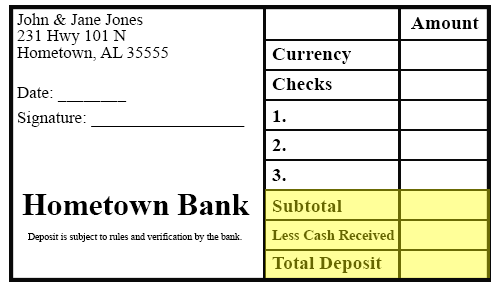
- Your signature may only be required if you are getting cash back from the deposit.
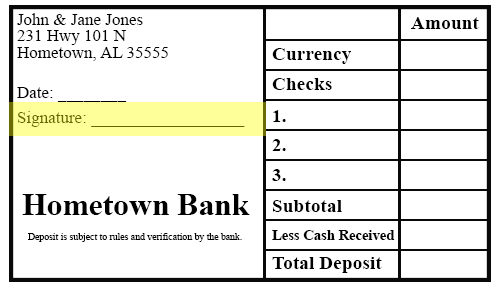
Writing Checks
Many people prefer to use a debit card over writing a check today. There are still times when you may have to write a check, so it is important that you know how to do it.
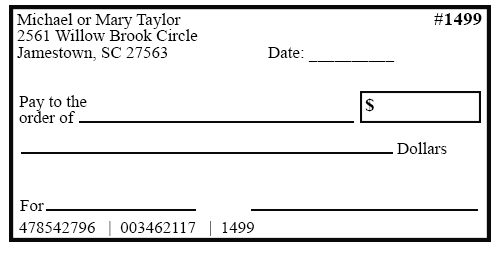
See a larger version of the check here.
Follow the steps below to fill out a check.
- Make sure that you date it correctly. Put the correct date on the line provided. Include the month, day, and year. You may write this out or enter using all numbers.
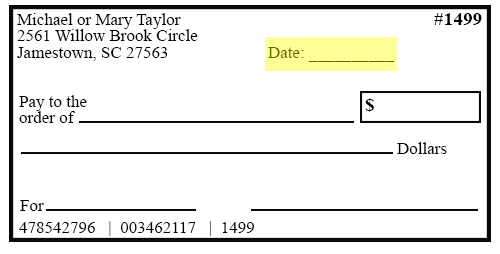
- Fill in the name of the person or business you are writing the check to on the line following Pay to the Order of.
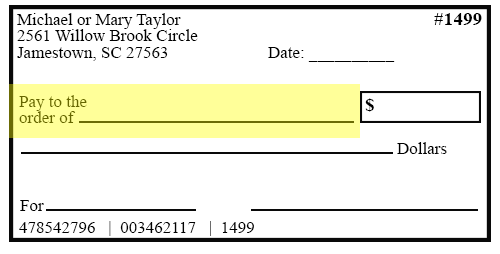
- Enter the amount of the check using numbers. Be sure to place the decimal point between the dollars and cents.
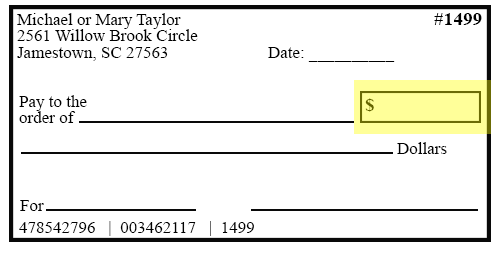
- You should enter the amount written out in words on the line ending with the word Dollars.
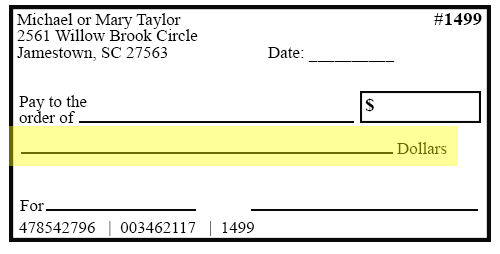
- The line at the bottom labeled For or sometimes Memo provides you with a place to note what the check was for.
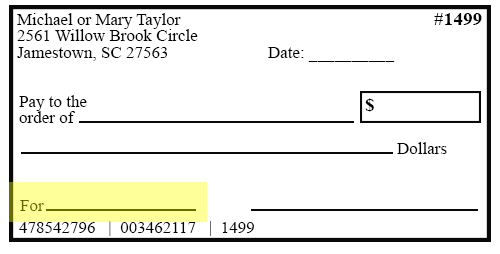
- Make sure that you sign all of your checks using the signature you entered on the signature card at the bank when setting up your account.
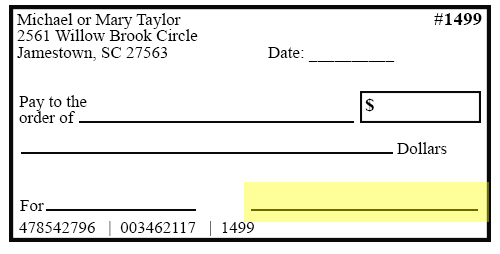
Check Register
It is important to keep a check register even if you do not write checks. This is where you keep up with your checking account balance. You will enter deposits, as well as money spent either by writing a check or using your debit card.

See a larger version of the check register here.
Follow the steps below to keep a check register.
- You will enter your initial deposit here when you set up your register. After that, you will enter the final balance from the previous page of your register.
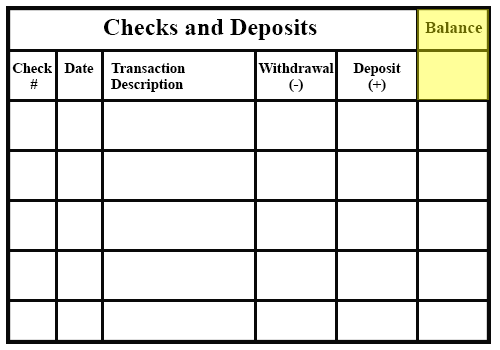
- You will need to be sure to enter the amount of each deposit as well as the date of the deposit.
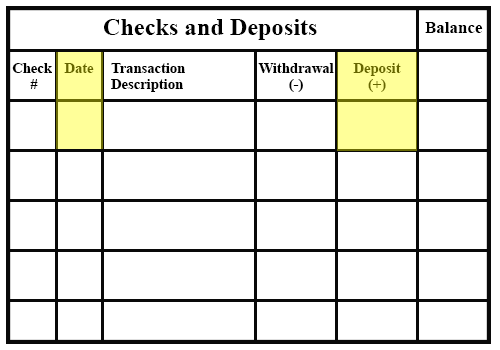
- When entering checks that you have written, be sure to enter the check number, the date you wrote the check, to whom you wrote the check, and the amount of the check.
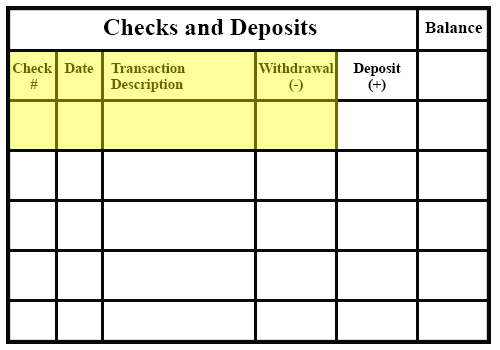
- In addition to checks, you will want to be sure to enter all of your debit card purchases as you go along as well. These will be entered as withdrawals.
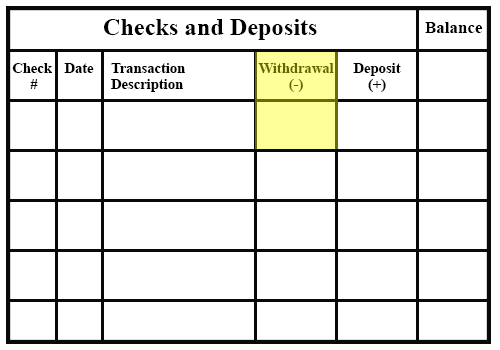
- To maintain your balance, you will need to subtract the amounts of the checks and debit card purchases and add the deposit amounts as you go along.
